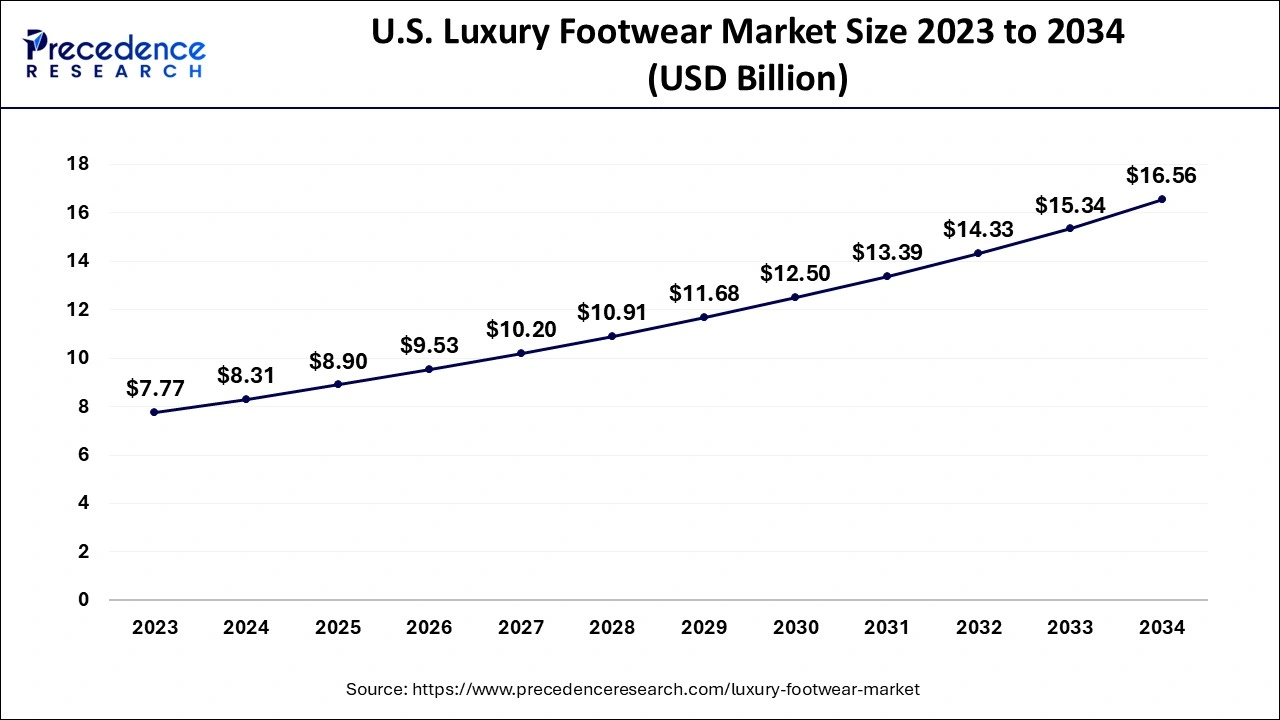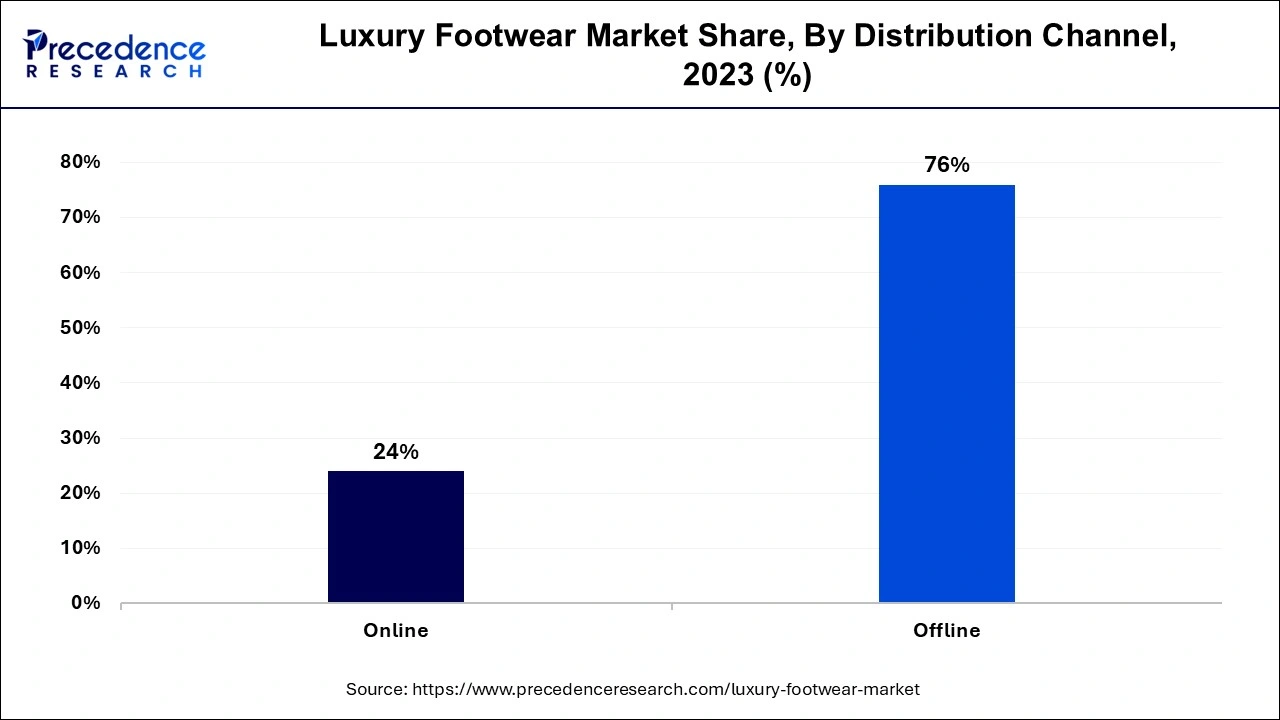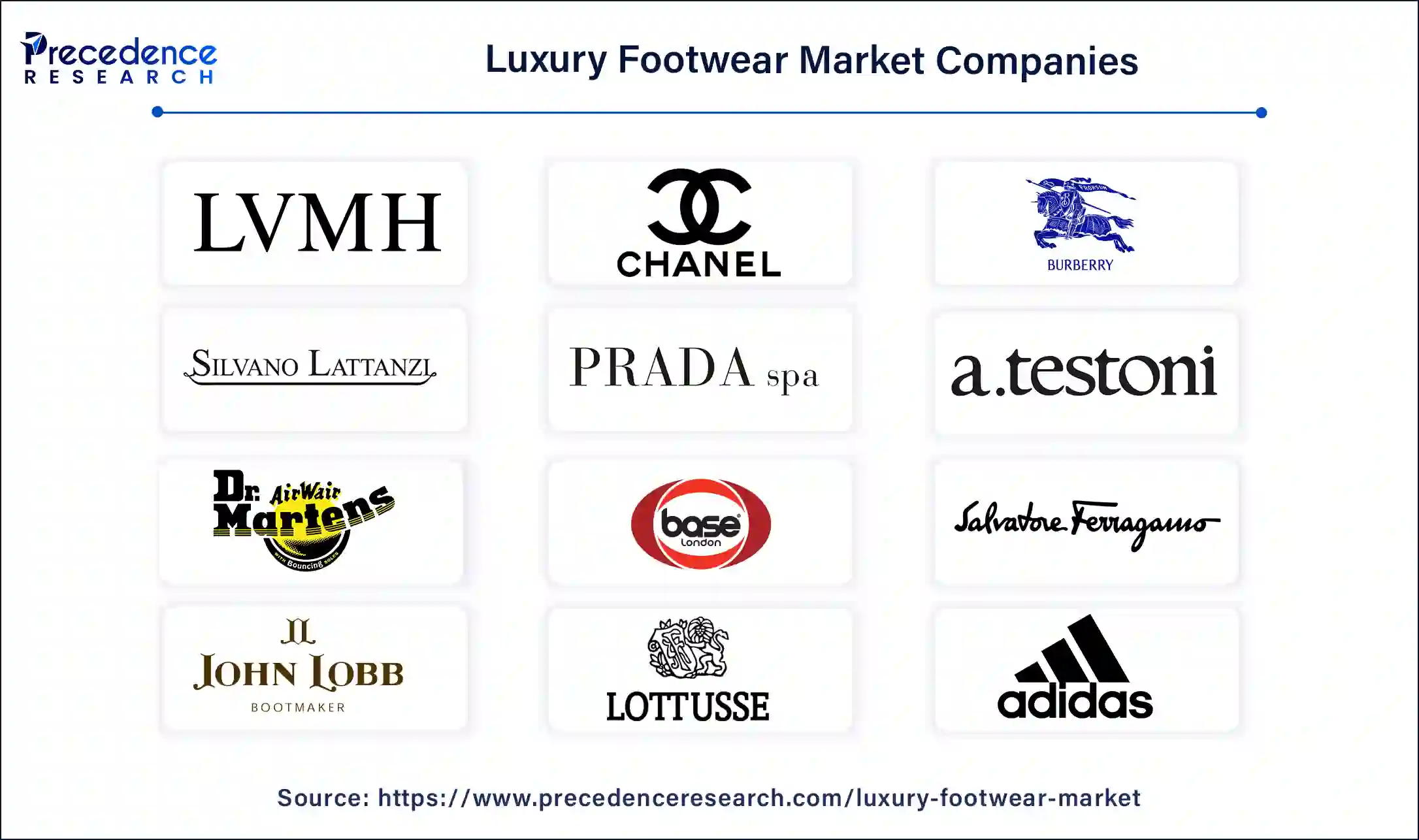February 2025
The global luxury footwear market size accounted for USD 38.66 billion in 2024, grew to USD 41.38 billion in 2025 and is predicted to reach around USD 76.34 billion by 2034, registering a CAGR of 7.04% between 2024 and 2034. The North America luxury footwear market size is calculated at USD 11.23 billion in 2024 and is expected to grow at a CAGR of 7.05% during the forecast year.
The global luxury footwear market size is calculated at USD 38.66 billion in 2024 and is estimated to hit around USD 76.34 billion by 2034, expanding at a CAGR of 7.04% from 2024 to 2034. The growing number of millionaires worldwide is the key factor driving the luxury footwear market growth. Also, increasing preference for attractive footwear coupled with the changing consumer lifestyles can fuel market growth further.

The U.S. luxury footwear market size is exhibited at USD 8.31 billion in 2024 and is expected to be worth around USD 16.56 billion by 2034, growing at a CAGR of 7.12% from 2024 to 2034.

North America dominated the luxury footwear market in 2023. The dominance of the region can be attributed to the high disposable income among the majority of the population due to the presence of a strong economy in the region. Furthermore, big metropolitan cities like Los Angeles, New York, and Toronto are major hubs for luxury products attracting consumers across the globe. The region also has iconic footwear brands such as Salvatore Ferragamo.

Asia Pacific is expected to show the fastest growth in the luxury footwear luxury footwear market over the projected period. The growth of the region can be linked to the rising purchasing power of the middle class in developing nations like China, India, and Japan. Moreover, there is increasing demand for luxury goods like branded footwear and premium products. Also, factors including celebrity endorsements are also impacting positive market growth in the region.
Luxury footwear is designer shoes designed with branders' premium materials and is popular because of its rarity, quality, and comfort. It is crafted from materials like suede and exotic skins. The luxury footwear market is known for its subtle detailing, convenient designs, and advanced craftsmanship. Due to its branded material design, luxury footwear is quite expensive. Luxury footwear includes leather footwear, athletic footwear, sandals, and sneakers.
How AI is Transforming the Luxury Footwear Market
AI is significantly changing the luxury footwear market, enabling the design of eco-friendly shoes with enhanced production and design. It also improves personalization, efficiency, and sustainability, creating a new era in the footwear market. Furthermore, AI has the ability to analyze the flexibility, strength, and weight of various materials. Which can be helpful to reduce the time required for material selection.
| Report Coverage | Details |
| Market Size by 2034 | USD 76.34 Billion |
| Market Size in 2024 | USD 38.66 Billion |
| Market Size in 2025 | USD 41.38 Billion |
| Market Growth Rate from 2024 to 2034 | CAGR of 7.04% |
| Largest Market | North America |
| Base Year | 2023 |
| Forecast Period | 2024 to 2034 |
| Segments Covered | Product, End-user, Price Point Type, Distribution Channel, and Regions |
| Regions Covered | North America, Europe, Asia-Pacific, Latin America and Middle East, and Africa |
Increasing demand for sustainable luxury footwear
As the environmental concerns are increasing luxury footwear brands are on the verge of capitalizing on this opportunity by providing sustainable footwear solutions to their customers. In addition, consumers' awareness regarding eco-friendly products is rising rapidly including footwear. Governments are launching new initiatives to promote the use of eco-friendly materials along with sustainable practices.
Economic uncertainty
Economic uncertainty and constant fluctuations in the spending of consumers can create substantial hurdles to the luxury footwear market. During the time of recession, consumers prefer to spend money on essential things rather than luxury items such as footwear. Moreover, trade policy uncertainty can raise the market players' overall production costs.
Increasing demand for exclusive designer collections
Luxury footwear market players exhibit exclusive, limited-edition products having high-quality materials like textiles, leather, and synthetics. This luxury footwear collection includes menswear like trainers and loafers and womenswear such as moccasins and stilettos. Furthermore, industry events such as exhibitions, shows, and trade fairs act as platforms for market players to launch new collections.
The fashion luxury footwear segment led the luxury footwear market in 2023. The dominance of the segment is attributed to the shifting consumer preference from traditional to luxury footwear along with the features offered by this footwear including elegance, unique design, and attractive look. Additionally, an increasing preference for elegant luxury shoes serves as a symbol of status and luxury driving the market growth further.
The formal shoe segment is expected to grow at the fastest rate in the luxury footwear market over the forecast period. The growth of the segment can be credited to the rising importance of formal shoes in the fashion and the corporate world as they reflect one's professionalism at the workplace. The prime types of formal shoes are loafers, brogues, oxfords, boots, and Derbys. Formal shoes generally come in two colors, black or brown, and are also worn for parties and special events.
The above USD 800 segment dominated the luxury footwear market in 2023. The growth of the segment is due to the increasing focus of companies on an innovative parameter like product developments, advanced design, and innovative technical fabrications to fuel sales. Furthermore, stylish and luxurious designs aligned with the higher prices are the key selling points of this footwear. Footwear above USD 800 is generally costly and fashionable.
The USD 400 to USD 800 segment is projected to grow at the fastest rate in the luxury footwear market over the studied period. The growth of the segment can be credited to the rising desire to experience a luxurious life, especially among millennials and Gen Z. In addition, there is a growing adoption of party culture in this generation, which demands expensive designer outfits and the appearance of which luxurious footwear is part. This factor can significantly impact the market growth further.
The women segment dominated the global luxury footwear market. The dominance of the can be linked to the growing spending on branded footwear by Gen Z and millennials. Also, there is a surge in the number of women working in the workforce. As women's lifestyles change, preferences for a variety of footwear that can easily convert from work to leisure activities are in high demand.
The men's segment is expected to grow at the fastest rate in the market over the projected period. The growth of the segment is driven by rising men's preferences for versatile and more durable styles because they are involved in certain outdoor or sports activities. However, celebrity endorsements play a significant role in manipulating millennials to go for current fashion trends. Key brands like Burberry, Prada, Giorgio Arman, and Dolce & Gabbana substance spend on these endorsements.
The offline segment accounted for the largest share of the luxury footwear market in 2023. The segment dominates because offline distribution channels such as boutiques and shops are popular among the majority of consumers. These facilities also rapidly adapt to the latest fashion trends in the market. Moreover, multi-brand luxury footwear channels are the most popular stores as they offer a wide variety of luxurious footwear options under one roof.

The online is estimated to witness the fastest growth in the luxury footwear market during the studied period. The growth of the segment can be driven by the increasing popularity of online distribution channels like Amazon and Flipkart, especially in emerging markets like China and India. Additionally, the online distribution channel provides greater product availability, leading to segment growth shortly.

By Product
By End-user
By Price Point Type
By Distribution Channel
By Geography
For inquiries regarding discounts, bulk purchases, or customization requests, please contact us at sales@precedenceresearch.com
No cookie-cutter, only authentic analysis – take the 1st step to become a Precedence Research client
February 2025
February 2025